Pakistan is facing renewed international pressure to take action against the Lashkar-e-Taiba. What do ordinary Pakistanis think of it, and other anti-India terrorist groups? Madiha Afzal explores that issue, drawing on survey data and on her new book, “Pakistan Under Siege Extremism, Society, and the State.” This piece originally appeared in Dawn.
Pakistan is facing renewed international pressure to take action against the Lashkar-e-Taiba (LeT). Prior to this, for the first year of its administration, the Trump government focused single-mindedly on the Haqqani network.
But it seems that Pakistan’s inaction on the LeT was an aggravating factor that led to U.S. pressure on the Financial Action Task Force and its decision to grey-list Pakistan for financing terrorism.
Though President Mamnoon Husain signed an ordinance freezing the assets of both LeT and the Jamaat-ud-Dawa (JuD), as well as other U.N.-banned organizations in mid-February, the international community did not deem it strong enough action against the LeT.
This also falls in line with Pakistan’s apparent pattern of making a move against the LeT when faced with pressure—but its actions tend to be purposefully marginal, and have always been reversible. The world notices.
What Pakistanis think of the Lashkar-e-Taiba
In the middle of this all, it is worth understanding what ordinary Pakistanis think of the group. The data I analyze here is from the Pew Global Attitudes surveys conducted annually in Pakistan since 2002.
Pew conducted face-to-face interviews with adults 18-years and older. In most years, approximately 1,200 individuals were surveyed.
The interviews were in Urdu and regional languages, and the polls are nationally representative of 80 percent to 90 percent of the population; it excluded regions that were insecure (FATA, Gilgit-Baltistan, and areas where security was a severe concern in Khyber Pakhtunkhwa [KP] and Balochistan).
Their sampling was disproportionately urban, but I weighted the results to account for Pakistan’s true urban/rural composition.
This analysis, and my results, are explained in further detail in my new book, Pakistan Under Siege: Extremism, Society, and the State.
Pew polls show that Pakistanis are always more unfavorable than favorable towards terrorist groups, including those that strike Pakistan (Tehrik-i-Taliban Pakistan, or TTP) as well as those that strike other nations (LeT and al-Qaida).
But their views towards LeT tend to be slightly more favorable than their views towards the TTP. For instance, according to the Pew Global Attitudes poll in Pakistan in 2015, 14 percent of respondents reported favorable views of the LeT, relative to 9 percent who reported favorable views towards the TTP.
Pakistanis are also more uncertain about, and less unfavorable towards, the LeT than towards the TTP. Thirty-six percent reported unfavorable views of the LeT, while 49 percent did not respond when asked about it.
On the other hand, views towards the TTP are far more negative – and it makes sense given that the group has killed thousands of Pakistanis, so many women and children among them: Sixty percent were unfavorable towards the TTP, while 30 percent did not respond.
Table 1: “Please tell me if you have a very favorable, somewhat favorable, somewhat unfavorable, or very unfavorable opinion of: i) TTP ii) LeT.”
| % Response | Tehrik-e-Taliban Pakistan | Lashkar-e-Taiba |
| Very favorable | 3 | 3 |
| Somewhat favorable | 6 | 11 |
| Somewhat unfavorable | 17 | 13 |
| Very unfavorable | 43 | 23 |
| Don’t know/refused to answer | 30 | 49 |
Source: Pew Global Attitudes Poll 2015.
But the lack of certainty on the LeT and lower levels of unfavorability about the group are significant. The public’s narrative on the group is muddled.
That is no surprise, given the view of it as a strategic asset by at least some in the state apparatus—and the conspicuous and deliberate silence maintained on the group more broadly by the state.
The group has been allowed by the state to function as a socio-political entity, and allowed to rebrand under different fronts. Its propaganda is vast and accessible, and its charitable arm is successful and effective.
What’s more, the Kashmir cause and LeT’s negativity on India resonate with the population—but it is important to note that the LeT propaganda is not anti-India alone. It is anti-West and anti-Israel as well.
Though civilian politicians are starting to speak out on the issue—as Khwaja Asif did in the U.S. last fall—it has not brought much in the way of clarity to the ordinary Pakistani.
Charity and propaganda
The LeT’s charitable wing and front, JuD, runs schools and ambulances and organizes emergency relief. According to a paper published by the New America Foundation, by 2009, JuD had the second-largest ambulance fleet in Pakistan.
After the devastating October 2005 earthquake and also after the 2010 floods, JuD was at the forefront in providing relief, reaching those the state did not.
A Washington Post report from the time refers to a man who received medical help from JuD after the 2005 earthquake, saying he “did not know whether the group was involved in violence, nor did he care.”
What mattered to him was that “every 10 minutes a doctor or medical attendant comes in to check on me. I have a very high opinion about this organization.”
LeT’s propaganda is widely available. And the assortment of propaganda magazines produced by the group—with separate publications for the youth, women, and a general audience—cover not only its anti-India and anti-West rhetoric, but also advises its readers on how to live a pious life and how to raise children.
Its ties with mainstream Islamists also helps normalize the group. Its leader Hafiz Saeed was a former member of the Jamaat-i-Islami.
Together with Jamiat Ulema-e-Islam’s Sami-ul-Haq and Jamaat-i-Islami’s Siraj-ul-Haq, he heads the Difa-e-Pakistan Council which was formed after the NATO attack of 2011, which killed 24 Pakistani soldiers at the Salala checkpoint and caused widespread anger in the country. That association lends him, and the LeT and JuD, legitimacy.
How does education and income impact attitudes towards LeT?
All this helps explain how Pakistanis’ attitudes on the LeT change with education and income. I found that education, even university education, does not reduce favorability for the group. Let’s unpack that.
On net, for the LeT (as with other terror groups), I did find that net unfavorability—the percentage with unfavorable views minus the percentage with favorable views—rises unambiguously with education, as does the certainty of responses—so on net, education “improves” views.
But looking at favorability alone, I found that high school respondents are slightly more favorable towards the Afghan Taliban (AT), the TTP, and the LeT than are students with less education—something that I argue can be attributed to Pakistan’s problematic high school curricula.
For the AT and the TTP, favorability fell again for education beyond high school, suggesting that for attitudes towards these groups, university education counters the effect of biased high school curricula.
But favorable views for the LeT don’t reverse with university education. Hafiz Saeed’s own respectable educational credentials—that he was a professor at the University of Engineering and Technology—likely affect views.
Similarly, the pattern with income is different for attitudes towards the LeT than it is with other terror groups. I found that Pew respondents with higher incomes have more certain and more unfavorable views towards all terrorist groups—except for the LeT. Higher earners were no more likely to have unfavorable views towards LeT than those earning less.
Pakistan’s younger population appears more likely to sympathize with all extremist groups.
With age, the trend is disturbing for all terror groups, including the LeT. My analysis shows that younger people have more favorable opinions of the LeT, and are more sure of their opinions, than older people. I saw the same patterns for the TTP.
Pakistan’s younger population appears more likely to sympathize with all extremist groups, reflecting an increasing tolerance of extremism on multiple dimensions in the younger generation.
By province, views towards the LeT behave as they do for other terrorist groups. I found that respondents from Punjab are the most favorable, and the least unfavorable, towards the LeT, the TTP, al-Qaida, and the Afghan Taliban, while respondents from Sindh and Khyber Pakhtunkhwa have the least favorable views towards these groups.
Taken together, the evidence suggests that the Pakistani state’s ambivalence on the LeT and the group’s success at disseminating its message has seeped through to the population—attitudes towards the LeT are less negative, and respond differently to education and income than they do for other terror groups.
These patterns matter: LeT’s ideology overlaps with that of other terrorist groups that strike Pakistan itself. If the Pakistani state is to properly take on the LeT, it will need to make a concerted effort to change its citizens’ perceptions of it as well.
The Brookings Institution is committed to quality, independence, and impact.
We are supported by a diverse array of funders. In line with our values and policies, each Brookings publication represents the sole views of its author(s).
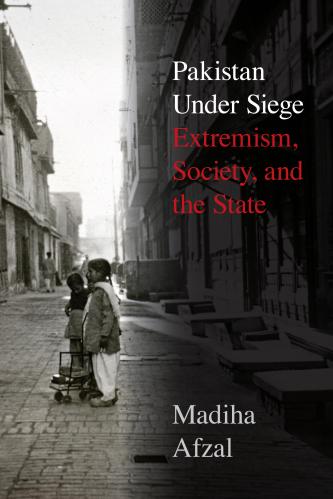
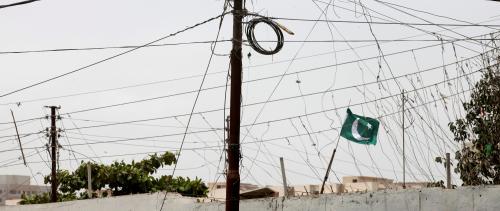
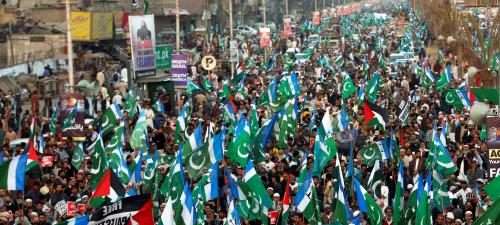
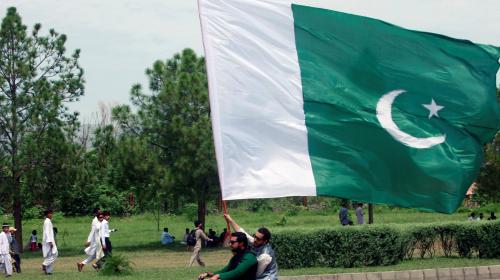

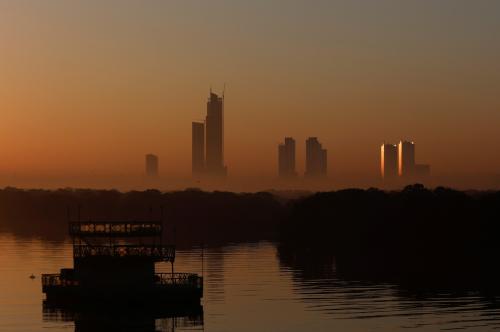
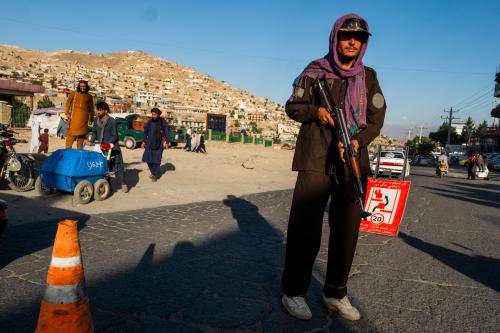
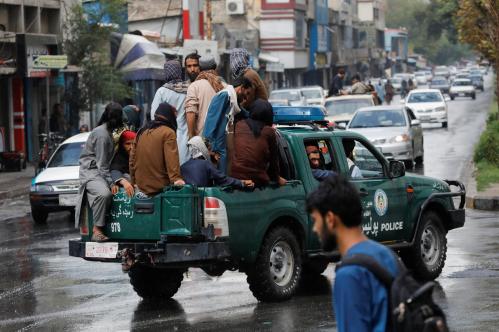
Commentary
What do Pakistanis think of anti-India terrorist groups?
March 29, 2018